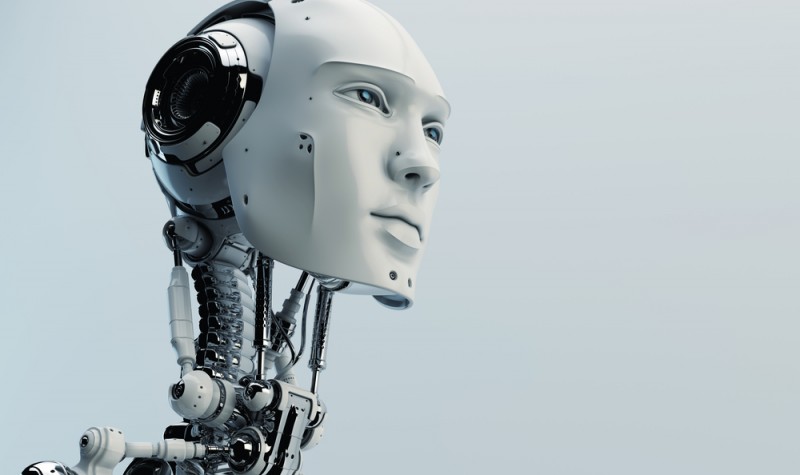Leadership by Algorithm: Who leads and who follows in the AI era?

Richard Gill, CFA, reviews Leadership by Algorithm, a book where author David De Cremer sets out to answer some of the questions arising from the advancement of AI.
In their 2014 book Fast Forward, authors Jim Mellon and Al Chalabi identify robotics and automation as an area that will have a notable and significant impact on our lives and investments, in the years to come. Artificial intelligence (AI) is at the core of this area. Put simply, it refers to ’intelligence’ exhibited by machines, as opposed to ’natural intelligence’ demonstrated by humans. A more extensive definition of these machines could be any device that perceives its environment and takes actions that maximise its chance of successfully achieving its goals.
A robot is generally accepted to be a machine which is capable of performing mechanical tasks. This is in contrast to a computer, which simply performs calculations using algorithms. Robots can be as simple as the Roomba, a robotic vacuum cleaner which uses sensors to spot and suck up dust. Following the definition previously suggested, the Roomba perceives its environment (senses dirt), takes action (cleans the dirt) and achieves its goal (a clean room). But robots could one day be as complex as the fictional twenty-fourth century android Mr Data from Star Trek, whose mental and physical capabilities are far superior to those of a human (and even a Klingon).
Significant advances in AI technology over recent years have led to market-research firm Tractica forecasting that the global AI intelligence-software market will grow revenues from around $10bn in 2018 to $126bn by 2025. But AI isn’t simply a money-making and time-saving technology, it has many social, ethical and even philosophical implications for humanity to consider.
In Leadership by Algorithm, author David De Cremer sets out to answer some of the questions arising from the advancement of AI, specifically with regard to organisations and leadership. De Cremer has many strings to his bow, being an economist, management guru and academic with an interest in organisational behaviour. Amongst other positions, he is a provost chair, professor in management and the founder and director of the Centre on AI Technology for Humankind at the National University of Singapore Business School. He is also a bestselling author − his book, Huawei: Leadership, culture, and connectivity has sold more than one million copies.
Rise of the robots
In his prologue to the book, De Cremer suggests AI is the kind of technology that is so disruptive there may not be a future for businesses that fail to adapt to it. While it offers the potential for many benefits to humanity, such as saving time and costs, helping with food production and reducing climate change, we may not yet be fully aware of the consequences if AI becomes integrated within our society. The key challenge is therefore to maximise the effectiveness of AI while ensuring it doesn’t undermine its end goal – to serve humans.
Chapter one begins with a discussion of the current state of AI and how its use has risen in organisations. The concept was first used back in 1956, with many scientists predicting, at the time, that machines would soon be able to do any work that a human could. But it wasn’t really until the early twenty-first century when significant advancements started to be made. The industry was highly influenced by Google DeepMind’s AlphaGo programme which, in 2016, was able to beat the human world champion in the highly complex Chinese board game Go.
With the realisation that machines, driven by powerful algorithms, have demonstrated the ability to outperform humans at some tasks, increased economic benefits have been forecast by many parties. PwC for example, expects that, used at a large scale, AI could boost the global economy by $15.7tn by 2030. But these expected benefits have come hand in hand with a fear that we are finally coming to a time when perhaps all our jobs could be replaced by a machine.
Humans being replaced by machines is not a new thing. In the first episode of BBC comedy One Foot in the Grave for example, broadcast in 1990, perennial grump Victor Meldrew is made to take early retirement from his job as a security guard, being replaced by a box with an answering machine. But now manual workers and those in the ’knowledge’ economy alike see a real threat that their livelihoods could be challenged by an algorithm.
Most of the rest of the book covers the concept of management and leadership in the world of the algorithm, beginning with the crucial question: “will your boss be a robot?” The answer is that it is likely, with the author arguing that algorithms can replace almost any feature that we think of as being a good leadership quality. He goes further by saying it is inevitable that algorithms will replace some management jobs, given the demand for business efficiency.
It’s not all bad news for managers however, as algorithms do not have the key qualities of empathy and building relationships crucial for leadership roles. De Cremer summaries this in his conclusion, suggesting that the human desire to improve our lives by technological innovation needs to be carefully managed so as not to damage the one thing that defines us – our human identity.
Follower the leader
Leadership by Algorithm will be of most interest to those involved in the management of businesses and anyone else who is fascinated by the power of and challenges posed by rapidly developing technologies. While not being an investment book specifically, it will help readers understand a trend that will likely affect all companies eventually, and even help to identify some specific investment opportunities – AIM-listed Blue Prism Group, for example, is a rapidly growing company operating in the robotic process automation software market. Overall, it is a thought-provoking and highly topical book which covers a broad range of themes.
Comments (0)